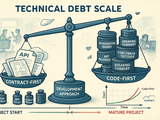Discover best practices for effective dependency management in software development and learn strategies to keep your projects secure, efficient, and free of technical debt. This comprehensive guide covers the critical importance of regularly updating dependencies, utilizing automated tools and processes to streamline dependency management, fostering a culture of proactive updates through incentives and education, and implementing organization-wide dependency management strategies at scale. Whether you’re an application developer, software architect, or engineering manager, this article provides actionable insights to help you master dependency updates and ensure your software stays healthy and high-performing.







